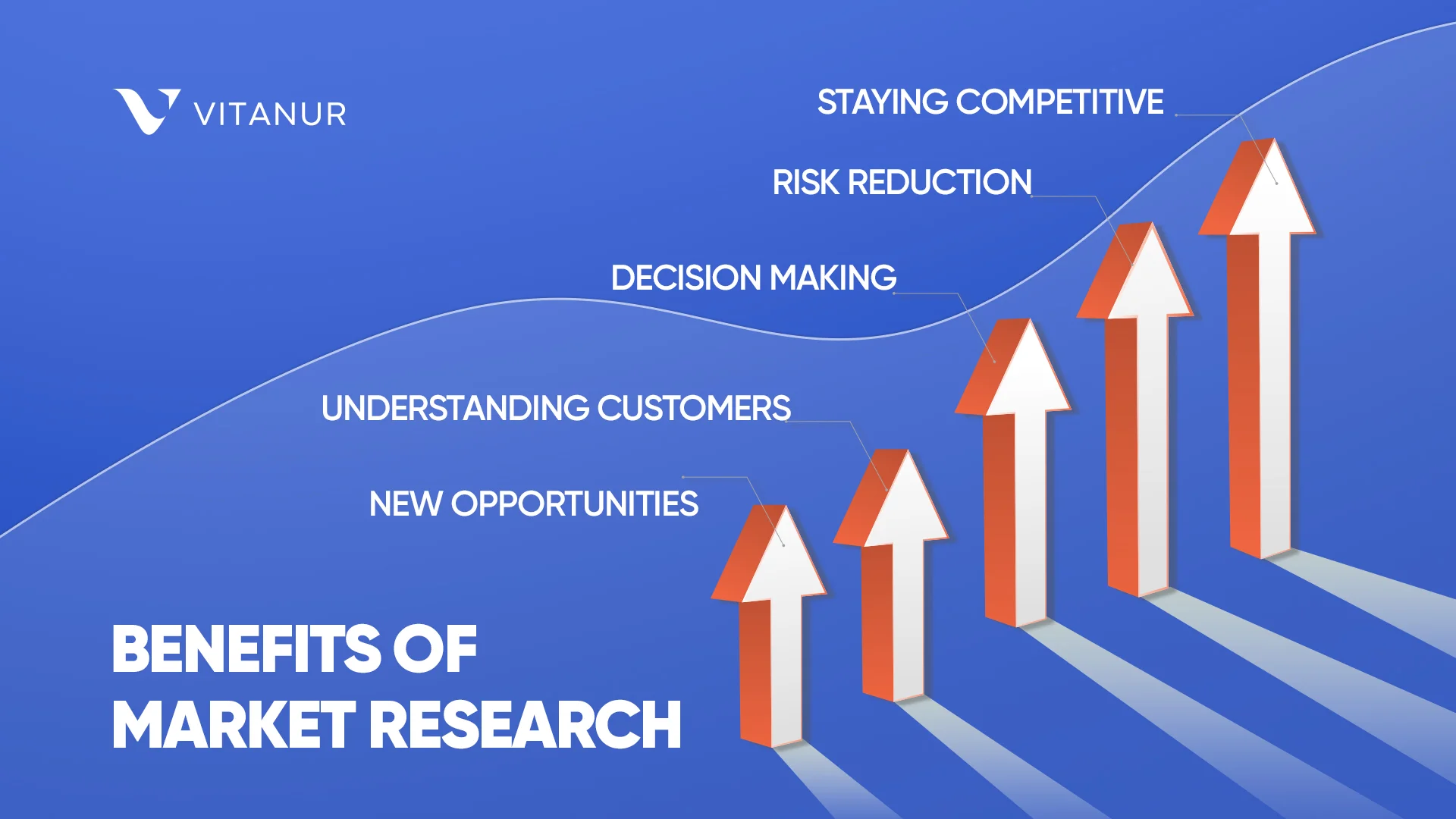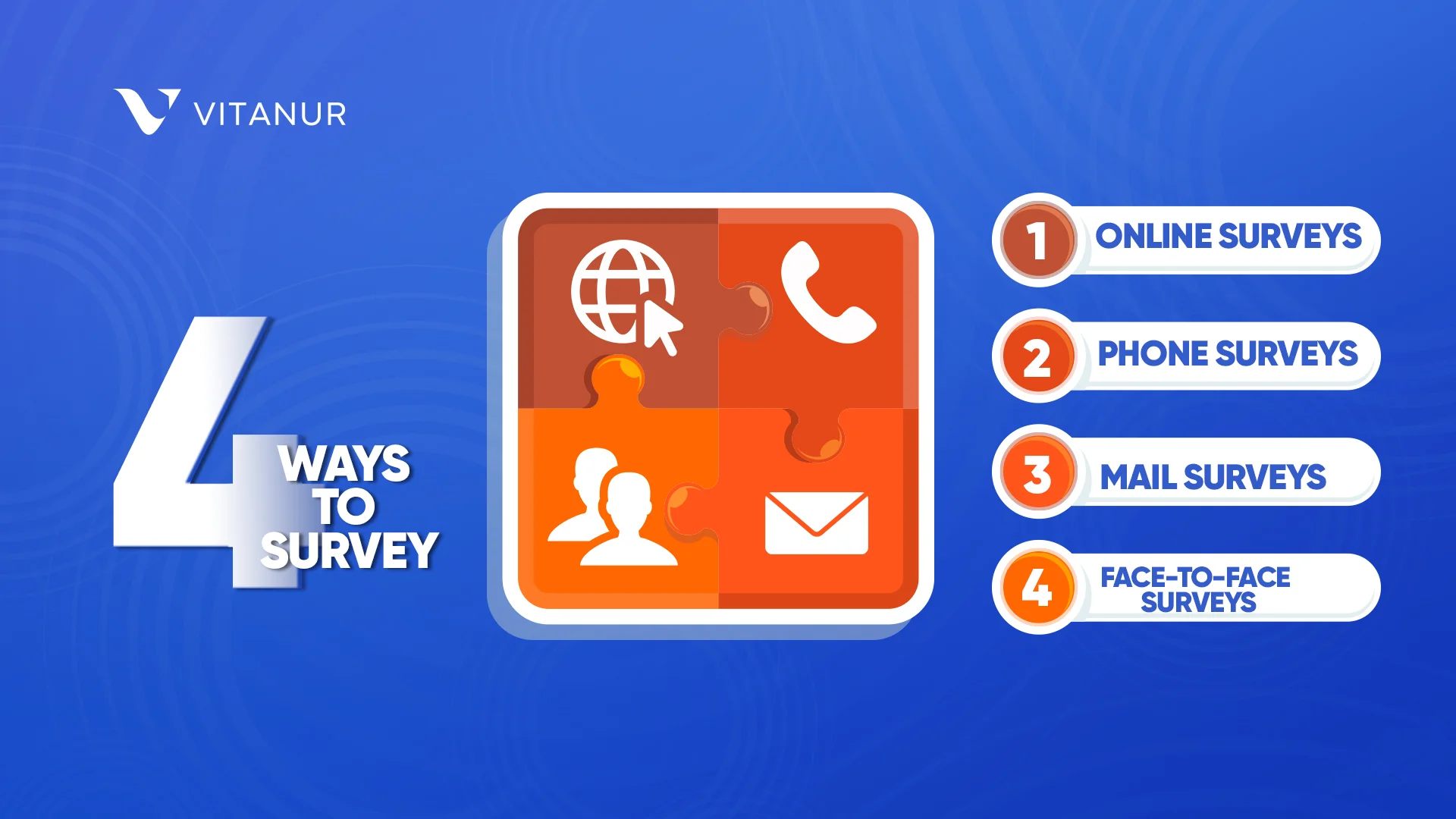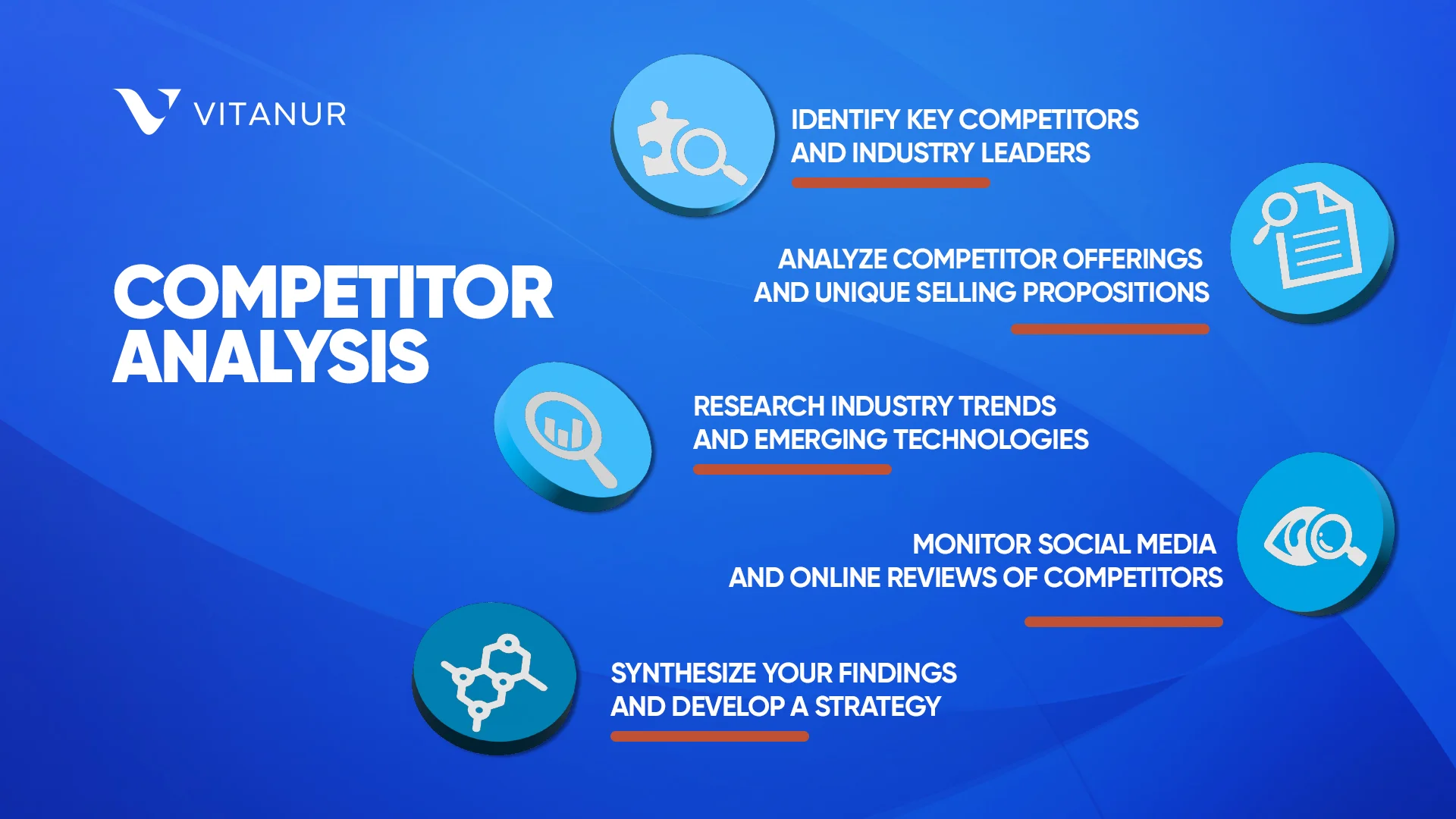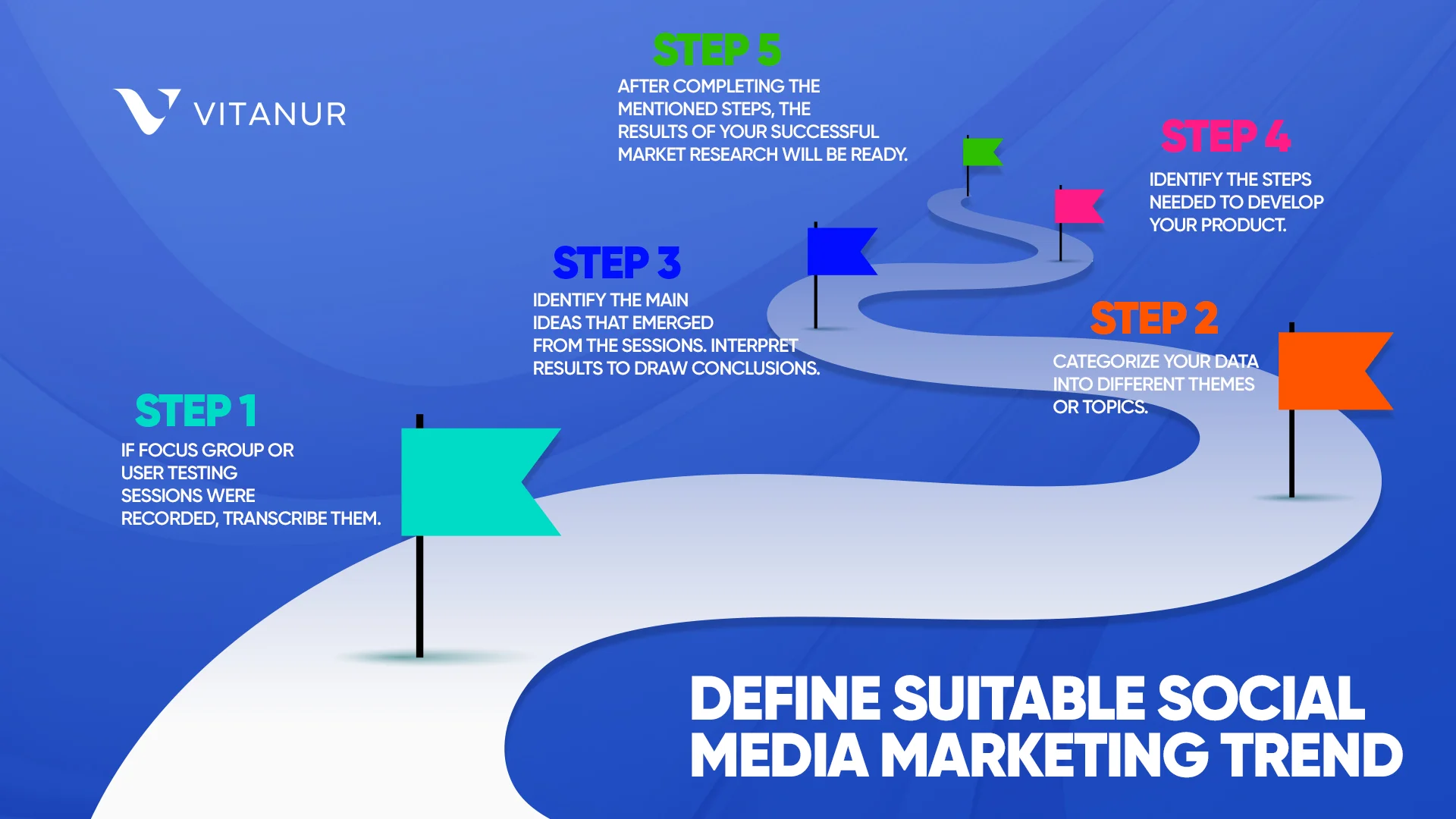5 Essential Market Research Techniques Every Business Needs to Know
We live in a world full of information. Combining this continuous stream of data to extract the most relevant information about a particular market or audience can be a relatively difficult task.
This is why market research is an important factor that enables brands and researchers to gather data from target markets and audiences. First, we need to look at it in detail.
What is Market Research?
Market research is a set of essential steps that lead to defining a strategy for the success of a new service or product by conducting direct research with potential customers. These studies usually include questions such as "Who are my customers?", "What demographic groups do they belong to?", "What do they need?", "How will the proposed service or product meet their needs?" etc. questions are used. Market research allows a company to identify its target market and get feedback from consumers about their interest in a product or service.
Benefits of Market Research

Market research is a process that not only large businesses should consider, but also small businesses. Thanks to it, businesses gain various advantages before entering the market:
- Identifying new opportunities in the market. By analyzing customer needs and behaviors, businesses identify untapped markets, niches, and product opportunities.
- Better understanding of customers. Market research gathers detailed information about customer demographics, behaviors, and preferences. As a result, businesses adapt their products and services to the needs of their customers. This helps businesses improve customer satisfaction and loyalty, which leads to increased sales and profits.
- Decision Making. With customer feedback, market trends, and competitor information obtained during market research, businesses can make informed decisions about product development, marketing campaigns, and business expansion.
- Risk reduction. Analyzing market trends, competitor and customer feedback market research gives businesses a chance to identify potential risks and prevent them.
- Staying competitive. By analyzing customer data as a result of market research, businesses develop effective marketing strategies, improve their products and services, and stay ahead of the competition.
These are just some of the benefits for an entrepreneur of doing a proper market analysis. Various market research techniques are used to gain these advantages.
Technique #1: Survey Your Customers and Prospects

Surveys are a market research technique that involves asking a group of people a series of questions to gather their opinions, attitudes, and behaviors about a particular product or service.
Why are surveys considered an effective research method?
- To collect large amounts of data - This data is analyzed to identify trends and patterns in customer behavior and preferences.
- Customizable - Surveys are customized to gather specific information about a product, service, or market trend. This makes them a flexible market research technique that is tailored to the specific needs of a business.
- Cost-effective - They are a cost-effective market research technique compared to other methods such as focus groups or interviews.
- Broad audience - Surveys can be distributed through a variety of channels, including email, social media, and mobile apps. This allows businesses to reach a wider audience and gather feedback from customers across different demographics and locations.
Define Your Objectives and Target Audience
Defining your goals and target audience is critical to getting the most out of surveys as a Market Research Technique.
- Objectives as a part of the Market Research Techniques determine the types of questions brands need to ask and the type of data needed to collect. The most common purposes of surveying include understanding customer preferences and behavior, identifying market trends and opportunities, assessing customer satisfaction, measuring brand awareness and perception, and evaluating the effectiveness of marketing campaigns.
- A target audience is a specific group of people to whom a survey will be sent.
- Demographic factors such as age, gender, income, education level, and geographic location are used to define the target audience.
- Moreover, job titles or industries are other factors that determine the target audience in Market Research.
- Finally, interest in a particular product or service is another factor that can be used to define a target audience.
A well-defined objective ensures that the Market Research Technique provides brands with the information they need to make informed decisions.

Choose the Right Type of Survey
Choosing the right survey plays an important role in making market research results-oriented. For this, first of all, survey types should be researched.
- Online surveys are the most popular type of survey as they are cost-effective, easy to distribute, and reach a wide audience. It is essential to collect large amounts of data quickly.
- Phone surveys are more personal than online surveys in Market Research and allow follow-up questions to be asked. Recommended when you need to gather in-depth information from a smaller audience.
- Mail surveys are a more traditional survey method and are ideal for reaching older audiences who are less likely to use the Internet. However, this market research technique can be costly and take longer to collect data.
- Face-to-face surveys are ideal for gathering feedback from a particular location or event. They are more personal and provide real-time feedback, but can be costly and time-consuming.
Choosing the most effective one among the many types of surveys is not an easy task in conducting market research.
Craft Effective Questions to Get Actionable Insights
When conducting market research, crafting effective questions is essential to gathering actionable insights. The right questions provide valuable information about the target audience, their needs, and how the brand is perceived. In this section, we've outlined the steps to crafting effective questions that lead to successful market research.
- Define your research objectives to formulate questions that suit your objectives.
- Use open-ended questions that encourage respondents to provide detailed feedback and allow qualitative data to be collected.
- Using closed-ended questions will provide quantitative data that is easy to analyze in market research.
- Use short and clear questions instead of questions that lead to imprecise or incomplete answers.
- Avoid biased questions that can distort your data and give inaccurate insights.
Testing your questions will help identify any issues for improvement before sending the question to a wider audience.
Analyze and Interpret Your Survey Results
Analyzing and interpreting the results of survey techniques is an important part of Market Research. Once data is collected, meaningful information must be obtained to process it and inform business decisions. But what steps should this process go through to make the right decisions?
- The first step in this process of market research is to organize the data and look for patterns and trends.
- The results should then be compared to the Market Research objectives to identify discrepancies. Data should also be segmented based on demographic variables to identify differences in responses between groups.
- Once the data is segmented, insights are extracted to inform business decisions.
- It is also important to confirm the results by conducting further research or gathering feedback from the target audience.
After performing this Market Research technique and analyzing the results, you will be able to market your brand or product more confidently.
Technique #2: Analyze Competitors and Industry Trends

Analyzing competitors and industry trends is a common market research technique used to gain a competitive advantage. This type of research helps businesses understand their competitors' strengths and weaknesses, identify market opportunities, and stay abreast of industry trends.
Identify Key Competitors and Industry Leaders
Identifying key competitors and industry leaders is an essential step in analyzing competitor and industry trends as a part of the market research technique. To identify key competitors, businesses must research companies that offer similar products or services, have a similar target audience, and operate in the same geographic region. Using this market research technique, it is essential to consider both direct and indirect competitors. Direct competitors are businesses that offer similar products or services, while indirect competitors are businesses that offer alternatives to the same need. In addition to identifying competitors as a part of the market research technique, marketers must identify industry leaders. Industry leaders are businesses with significant market share, influence, and industry influence. By identifying key competitors and industry leaders, businesses will better understand the competitive landscape and develop strategies to stay ahead of the competition.
Analyze Competitor Offerings and Unique Selling Propositions
If you plan to identify opportunities to differentiate your business and develop a unique value proposition that parts you away from the competition, another point to consider when using market research techniques is to analyze your competitors' products or services. Businesses should also evaluate their competitors' USPs by conducting Market Research. A USP is a unique feature or advantage that sets a product or service apart from its competitors. This step of Market Research helps businesses to develop strategies to compete more effectively and differentiate the products they offer in the market.
Research Industry Trends and Emerging Technologies
We live in a rapidly changing age, researching the latest trends and technologies of this age is an essential step in market research.
Researching industry trends helps businesses identify new market opportunities and stay ahead of the curve. This phase of the Market Research Technique includes several steps, tracking changes in consumer behavior, new technologies, and new business models.
Another important aspect of analyzing competitors and industry trends is keeping up with emerging technologies. This Market Research step includes researching new technologies, assessing their potential impact on the industry, and identifying opportunities for innovation. For example, businesses in the retail industry can use augmented reality and VR to enhance the customer shopping experience. By analyzing industry trends and emerging technologies, businesses can develop new products or services that differentiate them from the competition and improve the customer experience.
Monitor Social Media and Online Reviews of Competitors
Conducting market research on social media platforms and online review sites also provides a wealth of information about competitors, including customer feedback, product reviews, and overall sentiment toward the brand. By monitoring social media and online reviews of competitors conducting market research, businesses gain valuable insights into their competitors' strengths and weaknesses. This includes identifying areas where competitors excel and areas where they may fall short. For example, if you want to launch a product on the market, but thanks to this step of market research, you see that your competitor receives a lot of negative reviews from both customers, you can learn that the quality of the answer should be improved, taking these reviews into account.
Furthermore, monitoring social media and online reviews of competitors as a step of the Market Research Technique will also help businesses identify potential threats to brand reputation.
Synthesize Your Findings and Develop a Strategy
After collecting and analyzing the data, the final step in this type of market research technique is for businesses to make sense of the data and use it to inform decision-making. By synthesizing the results, businesses can identify patterns and trends in the market, understand their competitive position, and develop strategies to improve their market position.
Technique #3: Use Analytics Tools to Gain Insights

Moreover, businesses use analytics tools to collect and analyze large amounts of data to gain insights during market research. Tools such as Web analytics, social media analytics, Customer Analytics, and Competitive analytics are used for this type of market research. They help businesses identify patterns, trends, and other valuable insights to make more accurate decisions.
Set Up Your Analytics Tools and Define Goals
However, in order to effectively use analytical tools as a market research technique, it is important to set them up correctly and define clear objectives. So what are the right steps?
- Define your business objectives.
- Choose the right analytic tool.
- Install Analytics Tools.
- Define Key Performance Indicators (KPIs).
- Analyze Data.
Setting up your analytics tools right and defining clear goals is key to gathering and analyzing the data you need to make informed decisions about your market research.
Analyze Website Traffic and User Behavior
Analyzing website traffic and user behavior using analytics tools is a critical aspect of market research. By tracking website traffic during the market research technique, analyzing user behavior, tracking conversions, and using heatmaps, businesses will gain valuable insights into their website performance and user experience. This data can be used to optimize website design and content, improve user experience, and ultimately drive more conversions.
Track Conversions and Funnel Performance
Conversions refer to a specific action a user takes on a website, such as making a purchase, filling out a form, or subscribing to a newsletter. By tracking market conversion data during this market research technique, businesses can determine the effectiveness of their digital marketing strategies and make data-driven decisions to optimize website design and content. In addition, analyzing funnel performance as a part of market research helps businesses identify areas where users are visiting and provide insight into potential roadblocks in the user journey.
Use A/B Testing to Optimize Your Campaigns
Using A/B testing is an effective way to optimize campaigns and learn about user behavior as part of market research. This involves creating two versions of a website or marketing campaign and serving them to different groups of users. By analyzing data from both versions, businesses can determine which version performs better and make data-driven decisions to optimize future campaigns. A/B testing can be used to test different elements of a campaign, such as headlines, images, calls to action, and pricing. This data is then used as part of market research to understand customer preferences and behavior and adapt marketing strategies.
Leverage Advanced Analytics Techniques for Deeper Insights
Advanced analytics techniques include machine learning, predictive modeling, and data mining, among others. These techniques can be used during market research to analyze large data sets, identify patterns and trends, and predict future customer behavior. By applying advanced analytics techniques, businesses can better understand customer needs and preferences and tailor their marketing strategies accordingly. Using advanced analytics as part of market research enables businesses to gain deeper insights, make data-driven decisions to improve customer experiences, and accelerate business growth.
Technique #4: Conduct Focus Groups or User Testing

As part of market research, focus groups involve bringing together a small group of people representing the target audience and helping them discuss their ideas and opinions about the product. On the other hand, user testing involves observing participants' use of a product or service and their behavior and feedback. Both methods used during Market Research provide valuable information that helps businesses understand the needs and preferences of their target audience, identify potential problems with a product or service, and make some adjustments to increase customer satisfaction and loyalty. In addition, as a result of this phase of market research focus groups and user tests provide businesses with a competitive advantage by identifying key areas of differentiation that distinguish their products from the competitors in the market.
Determine Your Research Objectives and Questions
Determining research objectives and questions is a crucial market research technique that helps to ensure that research projects are focused and relevant to business needs. Research objectives are specific goals or outcomes that businesses aim to achieve through their market research projects. What should be considered when choosing objectives during market research?
These objectives should be SMART (specific, measurable, achievable, relevant, and time-bound) to provide clear insights. Research questions, on the other hand, should be clear, concise, and tailored to the research objectives.
If businesses want to gather information that is directly relevant to their needs and make the right decisions based on it, they must remember to clarify their research and questions during market research.
Recruit Participants and Set Up the Sessions
Once you have identified your target audience as a result of Market Research, the next steps are to recruit Participants and set up Sessions. There are several ways to recruit participants for market research, including
- Social Media;
- Online Panels;
- Referrals.
When recruiting participants for your market research, make sure they represent your target audience.
After completing this step, the next step in this market research technique is to set up research sessions. Research sessions can be conducted in person or virtually, depending on your research goals and budget. Here are some tips for setting up study sessions:
- Choosing a location,
- Building equipment,
- Scheduling sessions.
Design Your Focus Group or User Testing Protocol
Another method used in the market research phase is the use of focus groups for testing. At this time, a group of users (5-10 persons) meet with a moderator and measure the usability of the product or service. This process of market research can be in three stages:
- Testing before the design process begins gives the designer an idea of what problem the product will solve for the customer.
- During the development phase it gives an idea about the usability of this product.
- After the product is ready, it creates an opportunity to learn its place in the market.
When conducting a focus group or user test in your market research, it is critical to create a comfortable and welcoming environment for the participants.
Conduct the Sessions and Collect Data
After completing the mentioned stages of this market research technique, it's time to Conduct the Sessions and Collect Data.
Create a session plan that outlines the activities and questions you will use to collect data. This may include discussion prompts, activities, polls, and other methods.
Conduct sessions on Market Research in person or online and facilitate discussions or activities according to the session plan. Be sure to record sessions or take notes to capture data.
Analyze Your Findings
Analyzing the data at the end of conducting focus groups or user testing is crucial in market research. For accurate analysis, the steps mentioned below should be sequenced.
- If focus group or user testing sessions were recorded, transcribed them.
- Categorize your data into different themes or topics.
- Identify the main ideas that emerged from the sessions.
- Interpret results to draw conclusions.
- Identify the steps needed to develop your product.
After completing the mentioned steps, the results of your successful market research will be ready.
Technique #5: Monitor Social Media and Online Reviews

With the proliferation of social media platforms and online review sites, people are more inclined to share their thoughts and experiences with others, making these platforms a rich source of information for businesses. By tracking and analyzing conversations and feedback about their products or services during market research, companies gain valuable insights into their customers' preferences, pain points, and expectations, helping them improve their offerings, develop effective marketing strategies, and improve customer service. This market research technique is becoming increasingly popular with companies of all sizes and industries, enabling them to remain competitive and meet the changing needs of their customers.
Identify Relevant Social Media Platforms and Review Sites
However, it is crucial for businesses to identify appropriate social media platforms and review the sites their target audience uses to ensure the effectiveness of their market research. Facebook, Twitter, Instagram, and YouTube are some of the most popular social media platforms that businesses use as a part of the market research technique to monitor mentions and conversations about their brand or industry. Meanwhile, review sites like Yelp, Google My Business, and Amazon are also valuable sources of customer reviews and opinions.
Set Up Social Media Monitoring and Review Tracking Tools
For effective market research, there are many tools, both free and paid, that help businesses track and analyze conversations and feedback about their brand or industry. These tools track business-related mentions, hashtags, and keywords, provide information on customer sentiment and engagement, and help identify potential problems or opportunities. Some popular social media monitoring tools can be used during market research, including Hootsuite, Sprout Social, and Mention.
Develop a System for Categorizing and Analyzing Data
Once you collect the huge amount of data available on social media platforms and websites, it is very difficult to make sense of it. Developing a system for data classification and analysis is critical for market research to make sense of the vast amounts of data available and help businesses make informed decisions based on the information they collect during market research.
Monitor and Respond to Customer Feedback and Reviews
Monitoring and responding to customer feedback and reviews on social media platforms and review sites is a critical market research technique businesses use to increase customer satisfaction, build loyalty, and stay competitive. By having a system to monitor and respond to feedback in real time, businesses can quickly identify areas for improvement and take corrective action during market research. Additionally, by responding to feedback promptly and professionally, businesses build trust and loyalty with their customers, which ultimately leads to increased sales and revenue.
If you are looking to take your business to the next level, Vitanur's marketing services will help you achieve your goals. Our market research services will provide you with valuable insights into the target market and help you develop strategies to reach and engage with customers effectively. Don't hesitate to contact us to learn more about our services and how we can help you grow your business.




Write a comment
Your email address will not be published. Required fields are marked *